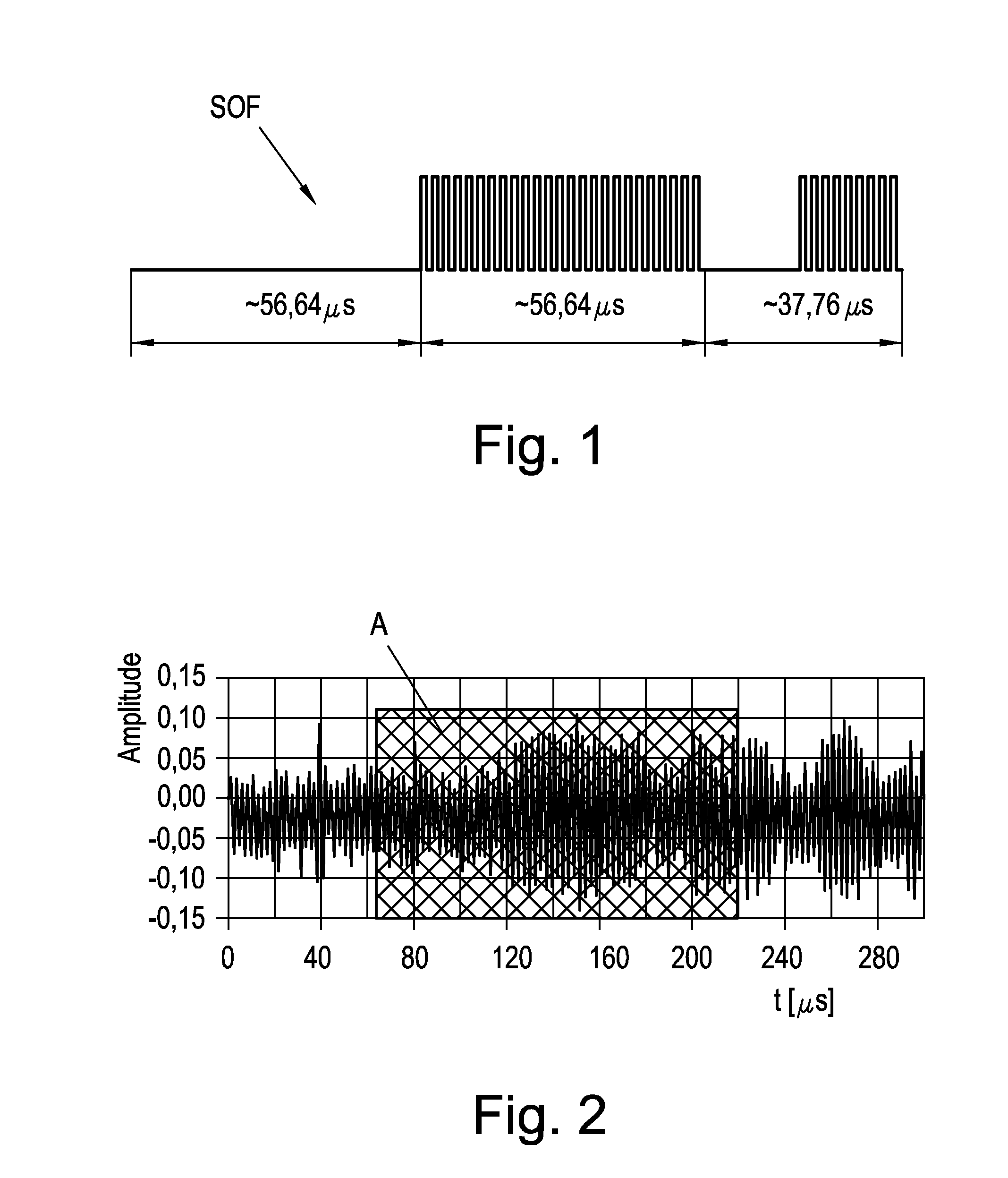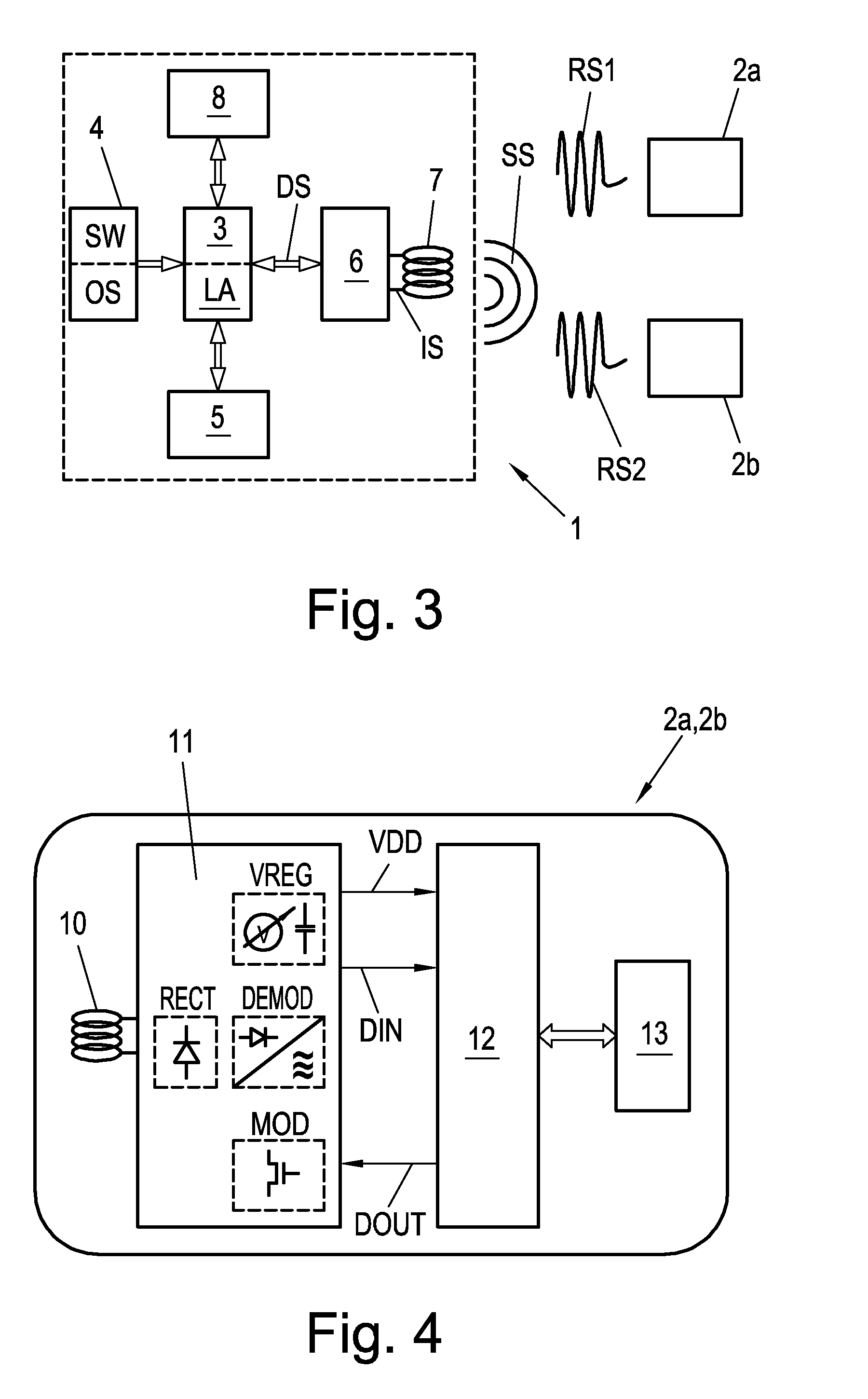Method and Rfid Reader For Detecting a Delimiter Pattern in a Signal Stream
a signal stream and delimiter technology, applied in the field of method for detecting delimiter patterns in signal streams, can solve problems such as data detection failures, complex things, and computing power needs
- Summary
- Abstract
- Description
- Claims
- Application Information
AI Technical Summary
Benefits of technology
Problems solved by technology
Method used
Image
Examples
Embodiment Construction
[0046]FIG. 3 shows a schematic block circuit diagram of an RFID (Radio Frequency Identification) system comprising an RFID reader 1 and a number of RFID tags 2a, 2b, wherein, for the sake of clearness, only two RFID tags are depicted. RFID reader 1 communicates with the RFID tags 2a, 2b in a contactless manner via modulated electromagnetic signals, provided the RFID tags 2a, 2b are within the transmission and receiving range of the RFID reader 1. The RFID reader 1 comprises control means 3, like a microprocessor or microcontroller, which control means 3 communicate via a data bus with program storage means 4. The program storage means 4 is adapted to store an operating system OS for basic operation of the control means 3 and application program code SW to be processed by the control means 3. The program storage means 4 may be configured as a non-volatile memory, like a PROM, EPROM, EEPROM or the like. The program storage means 4 may also be configured as a user definable ASIC, PAL o...
PUM
 Login to View More
Login to View More Abstract
Description
Claims
Application Information
 Login to View More
Login to View More - R&D
- Intellectual Property
- Life Sciences
- Materials
- Tech Scout
- Unparalleled Data Quality
- Higher Quality Content
- 60% Fewer Hallucinations
Browse by: Latest US Patents, China's latest patents, Technical Efficacy Thesaurus, Application Domain, Technology Topic, Popular Technical Reports.
© 2025 PatSnap. All rights reserved.Legal|Privacy policy|Modern Slavery Act Transparency Statement|Sitemap|About US| Contact US: help@patsnap.com



